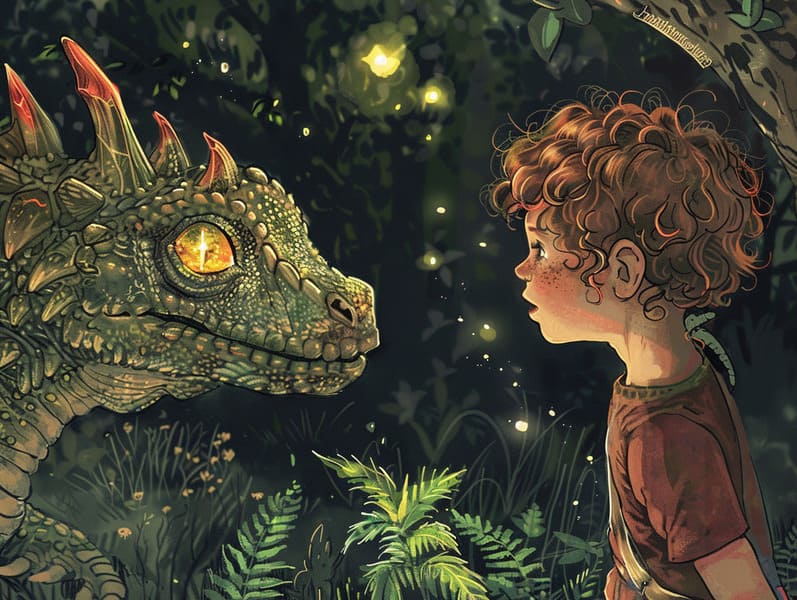The Beginning of Fairy Tales for Kids with the Perpetual Mystique.
The Beginning of Fairy Tales for Kids with the Perpetual Mystique.
Blog Article

Legendary fairy tales have long histories. These tales have been told from one generation to the next centuries before they were ever written down. They came from a variety of cultures, including African traditions. They were initially told among grown-ups, often carrying themes and messages related to the societal norms and beliefs of the time.
The Brothers Grimm, the two Grimm brothers, were among the first to collect many of these beloved narratives. Their anthology, "Grimm's Fables," included stories like "The Story of Cinderella," "Hansel and Gretel," and "Snow-White and Rose-Red," which have since become classics in the world of beloved fairy tales. Similarly, Hans Christian Andersen's fanciful narratives, such as "The Little Mermaid," and "The Story of the Ugly Duckling," have won hearts worldwide, cementing their place in the pantheon of classic fairy tales.
Though they are old, classic fairy tales remain as relevant as ever, especially as children's night stories. These delightful tales are now available in many formats, including vividly illustrated books, fantastical animations, and digital storybooks.
Their lasting presence can be connected to several whimsical characteristics:
Moral Lessons: Traditional fairy tales often impart important moral lessons. Fairy tales like "The Story of the Boy Who Cried Wolf" teach the importance of honesty, while "The Tale of the Tortoise and the Hare" emphasize the merits of persistence and humility. These tales offer young readers clear distinctions between ethical and unethical, molding their moral compass in a kind yet profound way.
Kindness and Comprehension: Classic fairy tales frequently portray characters facing obstacles and hardships, encouraging listeners to relate with their struggles and back their triumphs. For instance, "Beauty and Her Beast" highlights the value of looking beyond appearances to see the inner core of a soul, enhancing awareness and perception.
Cultural Perception: Many old fairy tales are rooted in the cultural contexts from which they emerged. Discovering these stories can provide enlightening views into different customs, developing a sense of world understanding and respect.
Creativity and Fantasy: The whimsical elements in traditional fairy tales—supernatural elements—kindle children’s creative dreams. These fairy tales transport readers to supernatural realms, activating inventive dreams and a sense of curiosity that lasts a lifetime.
Old fairy tales are not only entrancing but also didactic. They function as fantastical tools in nurturing various mental and emotional abilities in young readers. When classic fairy tales are voiced, they develop linguistic abilities by offering new phrases and intricate sentence structures. This practice also nurtures listening skills and concentration, as the young pay close attention, looking forward to see what happens next.
Furthermore, conversing about the themes and characters of ancient fairy tales can cultivate logical thinking and critical thinking. Young ones are led to detect patterns, forecast, and make sense of cause and effect. These analyses also facilitate little ones express their thoughts and feelings, strengthening their emotional intelligence.
In today’s high-tech era, the presence of digital storybooks has made these tales more accessible than ever. Digital sites and apps share ample collections of famous fairy tales that can be looked at or listened on anytime, anywhere. Fairy tales recited are particularly in demand, providing an fascinating method for kids to appreciate these magical stories. Spoken stories and read-out-loud stories take characters and settings to life, often enhanced by spellbinding melodies and musical scores that improve the narrative adventure.
The timeless charm of classic fairy tales lies in their ability to change to changing times while staying true to their central values. Contemporary adaptations of these tales often highlight more representative protagonists and modern settings, making them meaningful to today’s audience. However, the underlying themes of courage, warmth, and fair-mindedness remain unchanged, continuing to affect readers of all ages.
Timeless fairy tales also offer a sense of serenity and these guys homeliness. They highlight a well-structured narrative with a transparent beginning, middle, and end, often closing with the termination of conflicts and the triumph of virtue over wickedness. This regularity can be encouraging for children, rendering a sense of steadiness in an ever-changing world.
Traditional fairy tales continue to delight and instruct new generations, maintaining their allure and impact in modern society. As children's night stories, they make accessible a perfect blend of charm and enlightenment, developing moral values, empathy, and creativity. The availability of free fairy tales online and the well-liked nature of fairy tales narrated ensure that these old tales remain available to new generations.
By defending and communicating these fairy tales, we continue to acknowledge the rich tapestry of creativity and cultural heritage. Whether you are perusing a colorful picture book, enjoying a virtual collection, or listening to an spoken story, the grace of bedtime fairy tales is always within reach. These fairy tales convey of the timeless force of fairy tales and its ability to bond us across time and space.
Be it you are exploring a vividly illustrated book, discovering a web collection, or listening through an read-aloud book, the loveliness of traditional fairy tales is always within reach.
These stories show us of the enduring strength of storytelling and its ability to draw us together across centuries and lands, casting a charm that captivates and teaches alike.